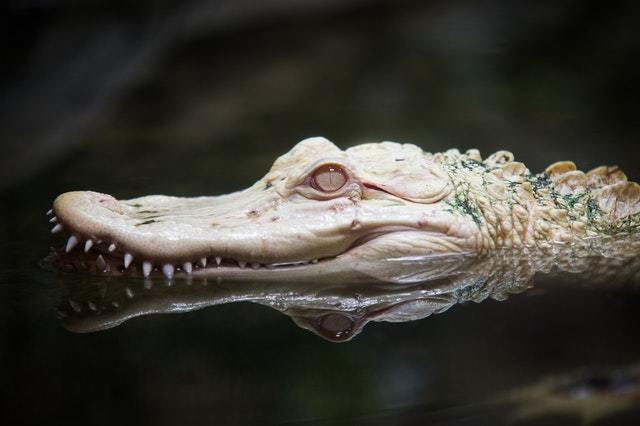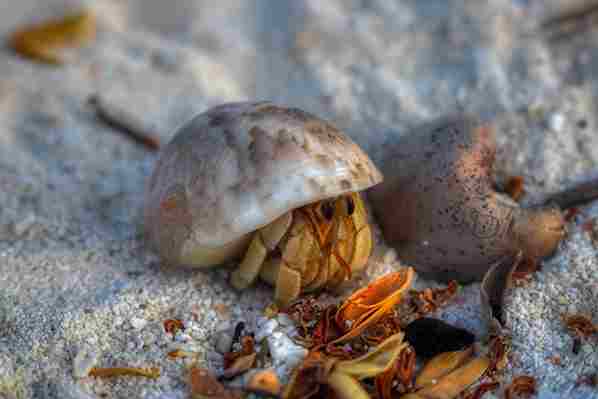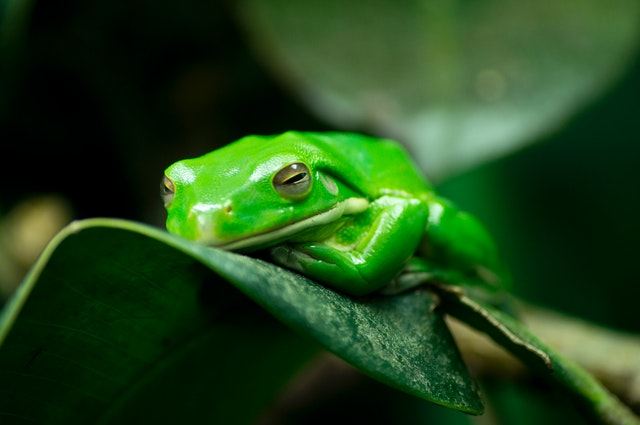Are Frogs Amniotes? (Everything You Should Know)
Frogs are amphibians, not amniotes. They belong to the same group as salamanders and toads. Amniotes are animals that lay eggs that contain chorion or amnion.
Oftentimes, the term ‘frog’ is used to describe any tailed amphibian belonging to the order Anura. Although, when used strictly, the term is usually restricted to members of the family Ranidae, which are known as the true frogs. But when used in a broader way, the term frog is often used to differentiate the smooth-skinned Anuras that leap from the squat, warty, hopping ones known as toads.
If you’ve probably been wondering whether frogs are amniotes or not, then this article is for you.
What is an Amniote?
The term ‘amniote’ refers to a class of tetrapod vertebrates that consists of mammals, aves, and reptiles. They are characterized by having an egg that contains chorion and amnion. They are also known for their adaptive ability to lay eggs on land or store fertilized eggs inside the mother.
The embryos of amniotes, whether they were laid as eggs or were carried by females, are often protected by some extensive membranes. For eutherian mammals, such as human beings, the extensive membranes come with the amniotic sac that serves as a protective wall for the fetus.
The robust embryonic membranes and the absence of larval stages differentiate amniotes from other species.
Egg laying amniotes have shells that provide a reasonable level of protection for their embryo as it develops as well as providing enough oxygen for them to survive. A fattier yolk in the egg means a better energy supply for the embryo, while the egg white gives it water as well as protein.
Difference Between Amniotes and Anamniotes
Amniotes and anamniotes have certain characteristics that differentiate them. We will look at them here.
Amniotes
- Amniotes are higher vertebrates that possess an amnion when they are in their embryonic stage.
- Amniotes consist of birds, reptiles, and mammals.
- Amniotes do not possess gills
- Amniotes do not need to be in water to reproduce.
- Amniotes lay eggs on land
- Amniotes do not possess permeable skin.
Anamniotes
- Anamniotes are lower vertebrates who do not possess amnion when they are in their embryonic stage.
- Anamniotes consist of fish and amphibians.
- Anamniotes require gills to survive throughout their lifetime.
- Anamniotes need to be in water to reproduce.
- Anamniotes lay their eggs on water.
- Anamniotes possess permeable skin.
In summary, amniotes and anamniotes both consist of higher vertebrates and lower vertebrates. The presence of an amnion is a distinct feature in amniotes while the lack of amnion is an essential characteristic of anamniotes.
Are Frogs Amniotes or Anamniote?
A frog is belongs to the amphibian group , which means it’s an anamniote. Anamniotes are lower vertebrates that lay eggs in open water, unlike amniotes that lay their eggs on land or store it inside the body of the mother.
When a frog lays its egg in water, it is fertilized and hatches into larvae. When the larvae is in water, it is able to deposit metabolic waste and carbon dioxide in the water while absorbing oxygen.
A frog’s life cycle starts in the waters after spawning and when it hatches from its egg it turns into a fish-like larvae with gills (tadpole). It later develops other vital organs, such as lungs and lumps, that will enable it survive on land. Its appearance and the arrangement of its internal organs are dramatically changed when it’s fully grown.
Why are Frogs Amniotes? (or Not)
Frogs are not amniotic. An amniote is any vertebrate animal that goes through a fetal development process involving an amnion. Because of this it is clear that a frog does not fall into the category of amniotes as it lays its eggs in water bodies. Amniotes are very diverse and can be found in almost every part of the world and in large distributions. The only place you may not find them are in the deeper parts of the ocean.
Other Amniotes Examples
Amniotes are a class of animals that can be easily distinguished from other vertebrates thanks to their ability to form an amnion (a tough thin layer of membrane that is lined by aminotic cavity).
Some examples of amniotes are reptiles like snakes, lizards, crocodiles, alligator, chameleon etc. Also birds like eagles, king fisher, pigeons, ducks, sparrows, chicken amongst others are another example.
Also mammals like platypus, kangaroos, wallabies and marsupials are amniotes.
It’s worth noting that they are a very select group of mammals that are amniotes and they are called monotremes in the order of monotremata.
Eutherian mammals are also amniotes. An eutherian animal or mammal is any animal that has a placenta, and that includes monkeys, dogs, cats , rats, squirrels, hamster, rabbits , deer ,cows etc. Also, they can be completely or partially covered in hair. They also include animals that feed their young with milk and generally warm blooded animals.
Frequently Asked Questions
Are amphibians amniotes?
Amphibians are anamniotes not amniotes. Amniotes are animals that lay amniotic eggs during their embryonic stage. The amniotic egg, which is often shelled, is made up of chorion and amnion. Amphibians reproduce in freshwater or close to freshwater.
Are reptiles amniotes?
Yes, reptiles are amniotes. Reptiles are ectothermic tetrapods that lay their shelled eggs on land. They possess scaly skin, lungs, and adaptive limbs they use for movement.
Amniotes refer to a class of tetrapods vertebrates that consists of sauropsids, which includes reptiles and birds. Also, they consist of synapsids, which include mammals. They are often differentiated by an extensive membrane known as the amnion, which provides protection for the embryo. Another characteristic of amniotes is the absence of larval stages.
Are humans amniotes?
Yes, humans are amniotes. This is because whether an egg is laid or carried internally by the female, it remains protected by an amnion, and in the case of humans and other eutherian animals, their fetus is surrounded by an amniotic sac.
In humans, fertilization occurs in the fallopian tube of the female. Here there is a union of the sperm from the man and egg from the woman. This then leads to giving a fertilized egg (zygote) which later forms a child. Amniotes are quite very easy to distinguish as they are animals that have eggs that have an amnion.
Are snakes amniotes?
Snakes are amniotes because they lay shelled eggs on land. They lay eggs that consist of chorion and amnion, which are extensive membranes. These extensive membranes provide protection for the embryo.
Snakes are long, limbless, flesh eating reptiles belonging to the suborder Serpentes. Just like other known reptiles, snakes are also ectothermic. And they are amniote vertebrates that possess overlapping scales.
Conclusion: Are Frogs Amniotes?
In conclusion, frogs are not amniotes; rather they are amphibians. They have gills and they reproduce in water, not on land.
Amniotes are any group of vertebrates that go through fetal development or embryonic development inside the amnion. Amniotes include birds, reptiles and mammals, and they reproduce on land.
Let us know if you have any more questions on whether frogs are amniotes.





